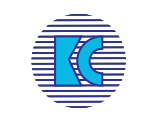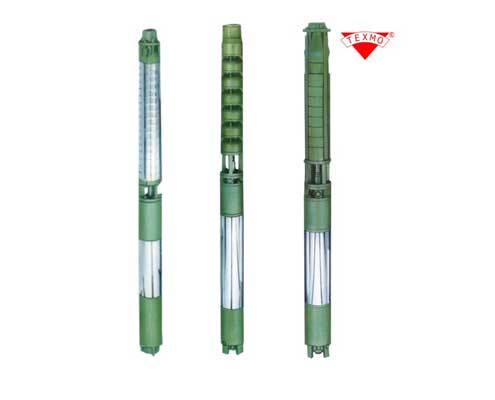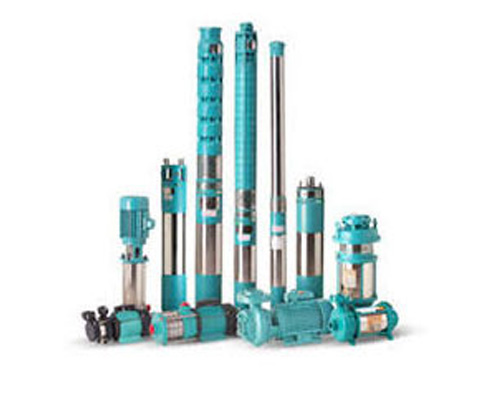Submersible Pump Selection, Installation, Maintenance and Troubleshooting
Houses which depend on ground water system, they of-course required an effective and efficient pumping system and pumping equipment. One of the pumping devices which are mostly used for pumping out water from underground would be a submersible pump.
However, to ensure satisfactory performance of these submersible pumps, it is important that pump-set is properly selected, installed and maintained. Proper maintenance does not start with rectification or repairs or replacement of worn parts, but starts right at the time of equipment selection. Equally important is proper installation. Negligence of fundamental precaution, during installation may result in premature failure of the equipment. Finally, good operation depends on good maintenance.
- Selection of pump set:
A proper selection of submersible pumpset ensures trouble free working for a longer duration. The following criteria have to be considered for selection.
Bore well size:
As submersible pump sets are normally installed on bore wells, the diameter of the bore well is the restricting factor in selecting the size of the pump-set. The best size of borewell be 6 to 7 inch diameter because the pump can be inserted to the bottom of the ground and fixed easily.
Discharge:
The yield of the bore well is an important criteria for pump selection. For an overall efficient performance, the rated discharge of the pump should be taken as 80% of the yield of the bore well. It is desirable to obtain a yield certificate from bore well contractor. Discharge can be around approximately for 0.5 hp is 5 gallons per minute. So you no need to struggle for calculations just take an approximation from the list provided from the manufacture and select the amount of water you need to fill your over head tank. Almost all manufactures provided the same specification because of standard physical if followed for the design of submersible pump.
Total Head:
To workout the total Head, add static head, drawn down, seasonal variation in water level and the frictional losses in bends, reducers, non return valve, column pipe and delivery pipe. This is simply other terms which include the height of the discharge outlet of the pipe, because the height is directly proportional to the pressure of liquid at that particular position, the pressure at which the liquid to pumped out the discharge outlet point is termed as the head of the pump.
Motor H.P number of stages:
From the pump selected above and the desired head, select the number of stages and the corresponding H.P/ phase from the performance chart having maximum efficiency at that duty point.
- Description of submersible pump set:
Motor and pump are together called as pump set and they are explained individually as:
The submersible pump set which is wet type will have a motor of type squirrel cage which can be completely fulled with cold, clear water. Motors are suitable for operating in voltage range of 350 to 440 volts in three phase and 180 to 240 volts in the case of single phase power supply. If it contains thrust bearing than it can with stand axial thrust loads with minimal wear and tear. A seal ring and sand guard should be provided to protect the pump from the sand and other foreign particles.
Pump:
Submersible pumpset have mostly centrifugal multi stage pump, and there are two types depending on the requirements like for high heads radial flow type of pump is used and for high discharge mixed flow type of centrifugal multi stage pump is used.
- Installation of Submersible pump:
Motor filling: Position of motor should be kept vertical. Mostly a water filling plug is provided at top of the pump casing so that it can be primed with clean, acid free water. The water should be oil free and sand free before pouring into the plug hole. Gently move the motor to and fro and leave it for 10-15 minutes, with the plug holes open so that any air bubble trapped in the winding will escape. Now pour more water to the loss of volume caused by the escaped air bubbles and screw up the two plugs, the motor is to be checked thoroughly for leakage of water before it is installed. The motor is now ready to be coupled to the pump and installed.
Cable Connection and Megger Test: Connect additional cable length to standard 3 meter cable supplied with pump.
The selection of the additional cable must be proper to ensure proper functioning of pump. Cable – section / size should match motor power, line length and starting system. To select the correct cable diameter size we must know the detail regarding nominal voltage of the motor, the nominal power of the motor and the supply cable total length details.
To connect the additional cable to the pump cable, cut off and strip the cable ends, so that the each lead joints are staggered at regular intervals. The colors of the leads which are to be joined together must be identical.
Insert the bottom plug and plastic tube into the pump cable and top plastic plug must be inserted to the jointing cable. Join each lead and solder properly. Ensure that after jointing approximately 15 mm of intact sheathing lies within the interior of the cable splicing sleeve on each side. After soldering file off the sharp corners on the soldering joints. insulate each joint separately by winding the rubber taps and adhesive tape tightly to at least 2 inch across the joint.
Push the plastic tube over the joints and ensure that it is central. Cap the bottom plug and push it securely into the bottom of the tube. Wind the Adhesive tape tightly around the bottom end of the tube and plug and the pump cable, and press firmly to ensure a prefect seal.
suspend the joint vertically so that the bottom end of the tube points downwards. Heat the tar based compound in a small tin and pour the molten compound in the tube from the top end. Refill the cavity to overcome any shrinkage and allow the compound to cool. Slide the top plug down the pump cable and push it securely into topside of the tube. Take the adhesive tape and wind tightly over the top plug and tube.
To check the insulation , conduct megger test with 500v megger, after keeping the joint in water.
- Operation of Submersible Pump:
Turn on the power supply and verify the voltage indication at the volt meter. Check whether all three phase supply voltage are same or not. If not, do not start the pump.
Direction of Rotation:
The direction of rotation can be changed by interchanging two phases, Higher discharge shows the correct direction of rotation.
Sand Test:
Care should be taken before installing the pump that the borewell is well flushed so that it is free from sand and silt. The pump set is suitable for pumping clear cold water with maximum permissible sand content of 10 gms per cubic meter. A recently installed bored well , submersible pump to be started with the gate valve on the discharge line partially opened at initial condition. The underground water should be examined and tested for the percentage of sand content. Sand content in the water are visible in the glass tube, then pump set should be runned continuously with the gate valve on discharge line is partially opened till the sand content of the water comes to a satisfied level. A noticing action to be considered that the pump should not stopped till we observe clear water, i.e it should not be turned off during pumping sand contained water. High level of sand content will cause premature tear and wear of pump internal parts.
Shut -Down Periods:
The pumpset must not be left idle for a week or so, since it might cause jamming of moving parts. It should be started atleast once in every week for five minutes. This will ensure that the pumpset is ready for service at any desired time.
Operation at Shut Off:
The pumpset must not be run for more than three minutes at zero discharge, since the pump will get overheated due to churning of water in the pump. If low discharge is required atleast 25 percent of the maximum discharge must be allowed.
Switching Frequency:
The stand – still time of the pump between switching off and switching on again should be atleast five minutes.
- Troubleshooting submersible pump problems:
- For every operation i have to pour water in the pipe to start motor to pump water from underground bore well to overhead tank.
Causes and remedies:
- Failure of NRV (non return value or check value) on the discharge line of the pump. Check if solid particles are stuck in it, clean it if possible if not replace the value. It helps to hold the water in the pump casing and suction line after pump is switched off. This avoids the pump becoming empty for next operation. So no need to fill the water again and again.
- May be the water level in the ground is dropped down and so the suction lift is not possible by the pump. Air lock will be created in the suction, they are removed when we pour water
- Which type of discharge pipe is suitable for submersible pump to discharge water from bore well.
Selection
- Usually GI pipe is used as discharge pipe, however this pipe corrodes quickly due to the water and moisture in the well.
- HDPE pipe are corrosive resistant to the bore well environment and can withstand the underground temperatures. However if there is a need to remove the motor and pump out of the bore well for maintenance there is chance of jamming. HDPE pipe may stretch by the applied pressure during pull out and deform its size and shape.




